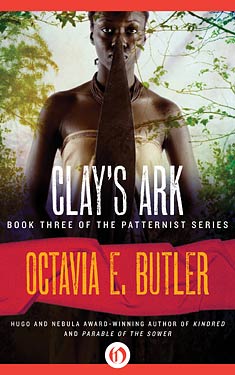Octavia
Butler
Completed 1/8/2019,
Reviewed 1/9/2019
3 stars
This is the
third of the Patternist Series, and the last written. It doesn’t have much connection to the first
two books. Rather, it creates the
genesis of the clayark creature in the fourth book. The clayarks are the progeny of humans that
have been infected with a symbiotic parasite from Proxima Centauri, brought
back to earth by Eli, the survivor of the interstellar ship Clay’s Ark. The book is about the struggle between the
parasite’s desire to reproduce and spread versus the infected humans’ attempt
to control it. It’s an interesting
story, and as always, well written.
However, I found it difficult to read.
I was always waiting for the connection to the Patternists, which only
came in the form of Clay Dana, who has a brief appearance in the previous
novel. It’s his discovery of faster than
light space travel via telekinesis that is the propulsion method of Clay’s
Ark. And we don’t find out about it until
about halfway through the book. It was
only after beginning the fourth book that I realized the necessity of this
one.
 The story
takes place in a dystopian future where some people live in gated, protected
communities while others live in the degrading remnants of cities, known as the
sewers. The book is told in two narratives. The first is a past narrative which describes
the crashing of Clay’s Ark and its sole survivor Eli who is infected with the
alien parasite. It recounts his initial
infections of other people and the building of a community of infected people
and their genetically modified children.
Their community is out in the California desert, isolated, so that they
can’t spread the parasite. The second
narrative is told in the book’s present.
It tells of Eli’s carjacking and kidnapping of a doctor and his two
daughters. The doctor, Blake, is brought
in to study the parasite and the three are basically fresh victims for
infection and procreation. The story
follow’s Blake and his daughters’ attempt at escape and the threat that poses
to spread the parasite worldwide.
The story
takes place in a dystopian future where some people live in gated, protected
communities while others live in the degrading remnants of cities, known as the
sewers. The book is told in two narratives. The first is a past narrative which describes
the crashing of Clay’s Ark and its sole survivor Eli who is infected with the
alien parasite. It recounts his initial
infections of other people and the building of a community of infected people
and their genetically modified children.
Their community is out in the California desert, isolated, so that they
can’t spread the parasite. The second
narrative is told in the book’s present.
It tells of Eli’s carjacking and kidnapping of a doctor and his two
daughters. The doctor, Blake, is brought
in to study the parasite and the three are basically fresh victims for
infection and procreation. The story
follow’s Blake and his daughters’ attempt at escape and the threat that poses
to spread the parasite worldwide.
I thought
the plot was very interesting and the world building well-imagined. It paralleled the same themes of the first two
novels, building a community of people with a specific issue or gift and
struggling to exist with the rest of the world.
They also have the common theme of having a maniacal leader who exerts
some type of control over the rest of the community. In this story, the leader, Eli is more morally
ambivalent than Doro from the first two books.
Both exert a sexual control, but Eli’s is based on the parasite’s need
to spread. Eli fights against the power
of the parasite, only bringing in fresh victims as necessary.
The
character development is good, although I thought a few of the supporting
characters were glossed over a bit. This
is compared to the first two books where I felt that every character presented
was well developed. Once again I could
not identify with any character though I had empathy for all of them. I thought they were all very interesting
personalities.
Even though
the trope of the microbe from space infecting the earth had already been done
in books and movies, this was still very inventive. What I like best about Butler is that no
matter the sub-genre she’s writing in, I find her world-building and character
development to be quite exquisite, even when I’m only rating the book as
good. I give this book three out of five
stars.
No comments:
Post a Comment